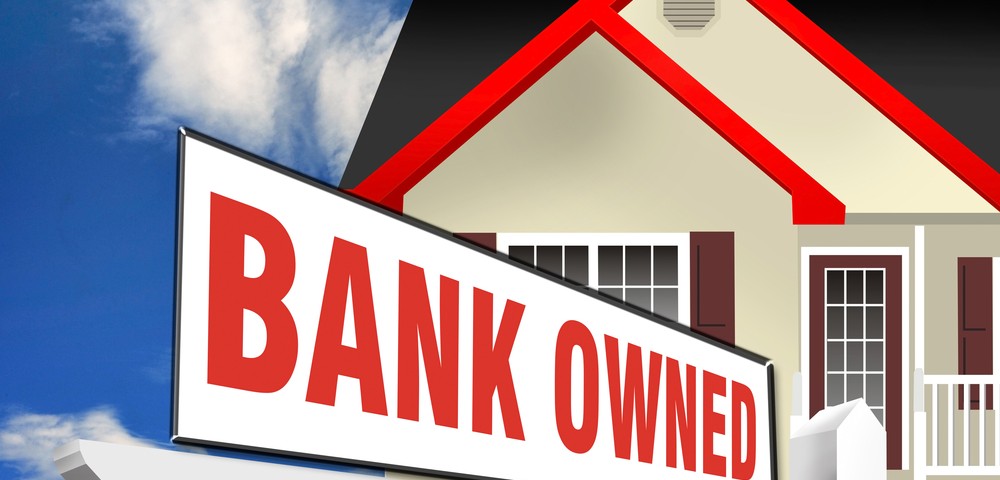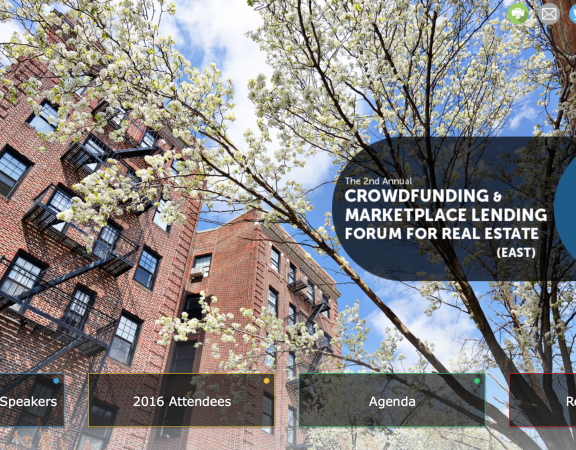Millions of distressed properties and individual and packaged pools of real estate mortgages have gone through various phases of the foreclosure process over the past several years. For property owners and mortgage borrowers, the foreclosure process can be one of the most stressful and disheartening situations to go through in life. For many people, their primary house is not only their home where people live with family and friends, it is also most likely represents the highest percentage of their own personal net worth.
If there are too many non-performing mortgages or foreclosed homes within a small neighborhood region at the same time, then overall values for the immediate neighborhood region may fall as well. Conversely, if there are not enough high quality deals with significant amounts of equity in a region of interest, it might not be too inspiring for investors either.
Increasing Investor Pools from Crowdfunded Sources, Regulation A+
The more money available for investment opportunities like distressed properties or discounted mortgage notes, then the more likely the value of these notes will increase in the near term. The Securities and Exchange Commission (SEC) back on March 25, 2015 adopted final rules for the expansion of Regulation A, which was an existing exemption for securities registration for smaller issuers of securities like with many crowdfunding businesses.
Per the SEC: “The rules are mandated by Title IV of the Jumpstart Our Business Startups (JOBS) Act. The updated exemption will enable smaller companies to offer and sell up to $50 million of securities in a 12-month period, subject to eligibility, disclosure and reporting requirements.
The final rules, often referred to as Regulation A+, provide for two tiers of offerings: Tier 1, for offerings of securities of up to $20 million in a 12-month period, with not more than $6 million in offers by selling security-holders that are affiliates of the issuer; and Tier 2, for offerings of securities of up to $50 million in a 12-month period, with not more than $15 million in offers by selling security-holders that are affiliates of the issuer. Both tiers are subject to certain basic requirements while Tier 2 offerings are also subject to additional disclosure and ongoing reporting requirements.
The impact of Regulation A+ means that more investors may be able to invest in crowdfunding platforms. Increasing capital flow for crowdfunding platform projects should also increase demand, equity cushions, and prices for quality properties. The Regulation A+ rules are complex and the jury is still out as to whether or not they are best suited to small capital raises.
Bailout Programs and Foreclosure Trends
Foreclosures and distressed mortgage notes may have reached the highest numbers back in 2009 nationwide. Quantitative Easing (which began in Fall 2008), and several other bailout programs, helped to reduce these massive numbers of distressed properties by artificially lowering interest rates to record low levels and reducing the amounts of listed and not listed properties for sale.
The U.S. housing market last peaked near 2007 shortly before the official start of the credit crisis back in the summer of 2007. Between 2007 and 2013, upwards of five million homes in the USA went all the way through the foreclosure process and later ended up with their funding bank, mortgage loan servicing company, or in the hands of a third party investor who brought cash to the foreclosure auction.
During this same time span, another five million properties went through some phase of the foreclosure process, but did not go all the way to the final foreclosure sale either due to the homeowner being able to bring their loan current, refinance, or they worked out some type of a loan modification agreement with the mortgage loan servicer in order to postpone or cancel the scheduled foreclosure auction. So, a grand total of upwards of ten million properties which went through at least one phase of the foreclosure process nationally between 2007 and 2013 is very challenging to grasp and comprehend. How many of these millions of properties later rapidly increased in value between 2013 and 2015 for the new investor or homeowner who was fortunate to be able to ride the wide-ranging price value swings?
The MERS Scandal and Declining Shadow Inventory Numbers
MERS (Mortgage Electronic Registration Systems) was originally established by many of the largest U.S. banks and title insurance companies partly to ease the funding, sale, and deed transfer processes between the various parties who are typically engaged in a real estate transaction. This process also included the subsequent sale of these mortgages to secondary market investors such as Fannie Mae and Freddie Mac. Additionally, MERS allowed buyers, sellers, lenders, and other parties to reduce the amount of physical paperwork involved in the purchase or sale of a home. Upwards of 60 million properties in the USA may have worked with MERS type systems since the mid-1990s.
Over the past several years, there were many highly publicized news stories regarding the fact that many of these recorded and not recorded mortgage documents (i.e., promissory note – the IOU for the mortgage debt) were flawed somehow, or even had fraudulent borrower and notary signatures on the documents. Many of the MERS mortgages had no existing signed promissory notes in their documents along with their other mortgage or trust deed documents in the file.
Some sophisticated investors were able to void their existing mortgage debt on their primary home or investment properties by pointing out in court that a mortgage document without a valid promissory note could legally void all of the mortgage debt. Banks scrambled with their own in-house legal counsel to try to negate or offset these legal claims from disgruntled homeowners who were having a hard enough time as it was to make their monthly payments on time. If one homeowner won in court battling the MERS issue, then it could adversely impact the chain of title history for several years or even decades and cause past property owners to sue the banks as well. What could be better for the homeowners than legally voiding their mortgage debt, and later ending up with a free and clear home?
As a result of so many people fighting back against their lenders who were trying to foreclose on them, then a high percentage of banks and mortgage loan servicing companies began to figuratively slam the brakes on the foreclosure process for so many of their mortgage clients. In some questionable situations which was most especially true for much higher mortgage amounts over $1 million, lenders did not even begin the foreclosure process on their defaulted mortgage borrowers for several years instead of just after a few months of no mortgage payments.
As a result of various financial institutions self-imposed foreclosure moratoriums, the number of foreclosed and listed properties for sale in recent years has fallen significantly (30% to 70%+ listing decline numbers in some regions). The combination of declining home listings and available mortgage pools to purchase and record or near record low mortgage rates has led to rapidly increasing property values in regions such as Los Angeles, San Francisco, Seattle, Austin, Miami, Boston, and New York City which greatly improves the collateral for secured mortgages also. When the demand for a product such as a home later exceeds the supply, then values tend to increase as well. Declining mortgage rates also allow borrowers to qualify for much higher loan amounts and property prices, so this has been a boost to home values as well.
Declining Shadow Inventory and Increasing Investment Opportunities
Core Logic, the U.S. real estate data research firm based, reported back in April 2014 in their study entitled ‘2014 National Foreclosure Report’ these following foreclosure trends:
There were 43,000 completed foreclosures in the United States in February 2014, down from 51,000 in February 2013, a year-over-year decrease of 15 percent. On a month-over-month basis, completed foreclosures decreased 13.1 percent from 50,000 in January 2014.
National residential shadow inventory was 1.7 million homes as of January 2014 compared to 2.2 million in January 2013, a year-over-year decrease of 23 percent.
Between September 2008 and the 1st Quarter of 2014, there were 4.8 million foreclosures which went all the way through all foreclosure phases to the final auction date and completion. In February 2014, there were approximately 752,000 homes in various foreclosure phases as compared with 1.2 million homes in various foreclosure phases one year earlier in February 2013. Core Logic reported that the total combined numbers of Foreclosure Inventory properties (i.e., delinquent mortgage loans and bank owned REOs (Real Estate Owned)) for the end of February 2014 reached 1.9 million properties.
Core Logic reported that the 5 states with the highest number of completed foreclosures between February 2013 and February 2014 were as follows: #1 – Florida (118,000), #2 – Michigan (50,000), #3 – Texas (39,000), #4 – California (37,000), and #5 – Georgia (34,000). As a group, these 5 states represented almost 50% of all completed foreclosures nationwide.
Per Core Logic: The 5 states or regions with the lowest number of foreclosure completions were as follows: #1 – Washington D.C. (60), #2 – North Dakota (421), #3 – Hawaii (519), #4 – West Virginia (571), and #5 – Wyoming (705).
The combined dollar amount of the shadow inventory (aka foreclosure inventory) was estimated to reach as high as $254 billion in January 2014. One year prior, the combined shadow inventory dollars amounts hit a projected $324 billion. Between January 2013 and January 2014, the overall shadow inventory dropped by almost 22%. Additionally, the number of shadow inventory homes declined by an average of 41,000 per month.
There are literally trillions of dollars of quality performing and non-performing mortgage pools available today for just a small fraction of the current true market value. Crowdfunding platforms such as CrowdVenture provide access to these types of investments, together with investments in multi-family apartments, retail shopping centers and single-family homes. This approach gives retail investors the chance to diversify their portfolios, in terms of risk profile, asset class and geography.
Matthew Sullivan
@thecrowdventure
Image by Shutterstock






